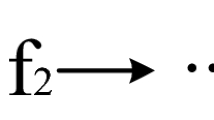Abstract
Image segmentation is a key problem in the field of machine vision. Its core goal is to separate the target and background in the region of interest from the image and directly affect the accuracy of subsequent operations such as target recognition and image understanding. In the past decades, there have been many good image segmentation algorithms. In recent years, the deep learning method represented by deep learning has made great progress in the field of image segmentation. In this paper, some commonly used image segmentation algorithms based on machine learning were reviewed, and their theoretical and experimental studies were carried out. In this paper, the application prospect of machine learning in image segmentation was prospected. The existing image segmentation methods are mainly divided into the following categories: threshold-based segmentation methods, region-based segmentation methods, edge-based segmentation methods, and segmentation methods based on specific theories. In recent years, with the rapid progress of computer vision technology, the requirements for the accuracy of object image edge information segmentation have become increasingly high. The main reason for image segmentation is to better obtain object information. However, due to interference conditions such as lighting and noise, image blurry edge information segmentation has become the most difficult point in the development of computer vision technology. In the comparative experiment of algorithms, the results showed that in the training set, the response time of Deep Neural Network (DNN) algorithm, Cluster Analysis (CA) algorithm, and Support Vector Machine (SVM) algorithm was 13.72 s, 16.88 s and 17.29 s when the number of samples was 150. In the test set, when the sample number was 50, the recognition rate of DNN algorithm was 93.7%; the recognition rate of CA algorithm was 87.9%; the recognition rate of SVM algorithm was 84.3%. Therefore, the research of image fuzzy edge information segmentation based on computer vision and machine learning is essential.
Similar content being viewed by others
Data Availability
The data that support the findings of this study are available from the corresponding author upon reasonable request.
References
Parul, S., Berwal, Y.P.S., Ghai, W.: Performance analysis of deep learning DNN models for disease detection in plants using image segmentation. Inf. Process. Agric. 7(4), 566–574 (2020)
Fabian, I.: nnU-Net: a self-configuring method for deep learning-based biomedical image segmentation. Nat. Methods 18(2), 203–211 (2021)
Yang, L.: Efficient image segmentation based on deep learning for mineral image classification. Adv. Powder Technol. 32(10), 3885–3903 (2021)
Renard, F.: Variability and reproducibility in deep learning for medical image segmentation. Sci. Rep. 10(1), 1–16 (2020)
Hyunseok, S.: Machine learning techniques for biomedical image segmentation: an overview of technical aspects and introduction to state-of-art applications. Med. Phys. 47(5), e148–e167 (2020)
Samuel, M.: Performance analysis of clustering based image segmentation techniques. J. Innov. Image Process. (JIIP) 2(01), 14–24 (2020)
Kavita, U.: Visual Intelligent Recognition System based on Visual Thinking. Kinet. Mech. Eng. 2(1), 46–54 (2021)
Shan, P.F.: Image segmentation method based on K-mean algorithm. EURASIP J. Image Video Process. 81, 81 (2018)
Han, Yu.: Trajectory Tracking Control Method for Flexible Robot of Construction Machinery Based on Computer Vision. Kinet. Mech. Eng. 4(1), 20–29 (2023)
XiaoQing, Z., Zhao, S.-G.: Cervical image classification based on image segmentation preprocessing and a CapsNet network model. Int. J. Imaging Syst. Technol. 29(1), 19–28 (2019)
Singh, K.N., Singh, A.K.: Towards Integrating Image Encryption with Compression: A Survey. ACM Trans. Multim. Comput. Commun. Appl. 18(3), 1–21 (2022)
Flannery Sean, W.: Automated magnetic resonance image segmentation of the anterior cruciate ligament. J. Orthop. Res. 39(4), 831–840 (2021)
Kh, F.S., Yusupov, O.R., Abdiyeva, Kh.S.: Mammography image segmentation in breast cancer identification using the otsu method. Web Sci.: Int. Sci. Res. J. 3(8), 196–205 (2022)
Liu, Z., Yang, D., Wang, Y., Lu, M., Li, R.: EGNN: Graph structure learning based on evolutionary computation helps more in graph neural networks. Appl. Soft Comput. 2023, 110040 (2023)
Tan, Y., Liu, M., Chen, W., Wang, X., Peng, H., Wang, Y.: DeepBranch: Deep Neural Networks for Branch Point Detection in Biomedical Images. IEEE Trans. Med. Imaging 39(4), 1195–1205 (2020)
Singh, P.N., Agarwal, S.: Modality specific U-Net variants for biomedical image segmentation: a survey. Artif. Intell. Rev. 55(7), 5845–5889 (2022)
Minaee, S.: Image segmentation using deep learning: A survey. IEEE Trans. Pattern Anal. Mach. Intell. 44(7), 3523–3542 (2021)
Zhou, Z.: Unet++: Redesigning skip connections to exploit multiscale features in image segmentation. IEEE Trans. Med. Imaging 39(6), 1856–1867 (2019)
Zahangir, A.M.: Recurrent residual U-Net for medical image segmentation. J. Med. Imaging 6(1), 014006–014006 (2019)
Funding
This research was supported by the Science and Technology Department of JilinProvince [20210302009NC http://kjt.jl.gov.cn], and the Science and Technology Bureau of Changchun City [21ZGN27 http://kjj.changchun.gov.cn
Author information
Authors and Affiliations
Contributions
Tianye Luo and Shijun Li designed the experiments, collected data for the number of trajectory points, trained, performed the characterization modeling, and wrote the first draft of the paper.
Ji Li and Jie Guo critically reviewed the method used and contributed to structuring the paper.
Ruilong Feng and Ye Mu implemented the proposed prototype, ran the experiments for the performance study.
Tianli Hun, Yu Sun, Ying Guo and He Gong collected data for experimental comparison usage and drew the curve.
Corresponding author
Ethics declarations
Competing Interests
The authors declare no competing interests.
Additional information
Publisher's Note
Springer Nature remains neutral with regard to jurisdictional claims in published maps and institutional affiliations.
Rights and permissions
Springer Nature or its licensor (e.g. a society or other partner) holds exclusive rights to this article under a publishing agreement with the author(s) or other rightsholder(s); author self-archiving of the accepted manuscript version of this article is solely governed by the terms of such publishing agreement and applicable law.
About this article
Cite this article
Luo, T., Li, S., Li, J. et al. Image Fuzzy Edge Information Segmentation Based on Computer Vision and Machine Learning. J Grid Computing 21, 56 (2023). https://doi.org/10.1007/s10723-023-09697-4
Received:
Accepted:
Published:
DOI: https://doi.org/10.1007/s10723-023-09697-4




